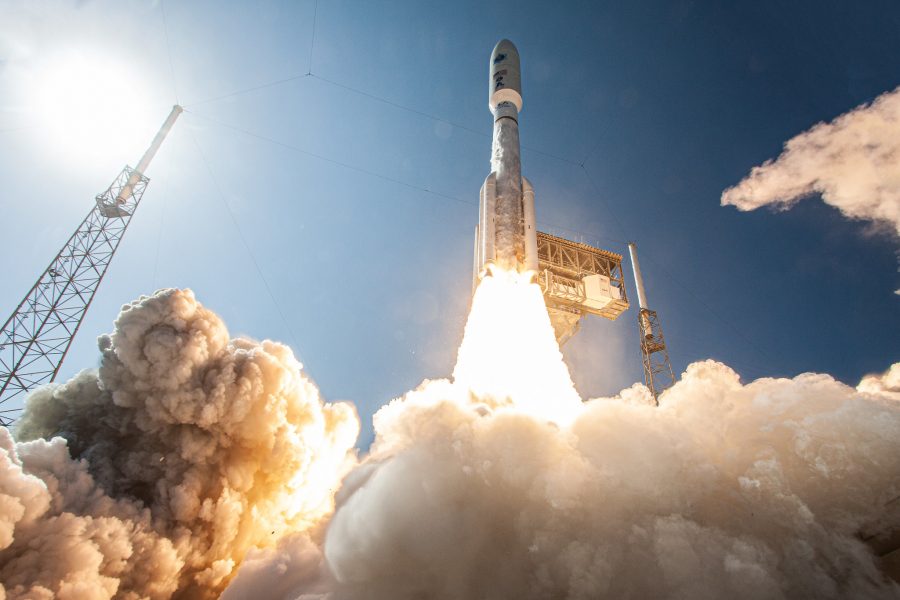United Launch Alliance Chief Executive Officer Tory Bruno has made a career out of building rockets that carry heavy objects across long distances. But 50 years in the future, as the U.S. returns to the moon and pushes beyond, he expects a new approach to ferrying cargo across the cosmos to emerge.
Delivery from the ground to low Earth orbit will become a commodified service, and will connect to a still-emerging network of in-space transportation options, Bruno said Sept. 15 during the Air Force Association’s virtual Air, Space & Cyber Conference. LEO sits between 80-2,000 kilometers above the Earth’s surface, and is a top focus of military space planning for new communications, missile tracking, and imagery satellites.
“Launch vehicles that take off from the Earth will never go past [low Earth orbit],” he said. “We will drop those payloads off, just orbital, and there will be a space transportation system of assets that stay in space, that will pick them up and move them through Earth orbit and through cislunar space.”
Ideas like space tugs and moon shuttles are largely still in their infancy. But Bruno’s suggestion could preview changes to how the Space Force plans and buys launches, and can shape what types of rockets the U.S. buys if cargo begins leapfrogging across various vehicles.
Reusable rocket components and ridesharing can help maintain a steady flow of cargo to LEO, which the Pentagon wants to make cheaper and more routine.
NASA has funded research in this area through ventures like the Commercial Orbital Transportation Services program, which offered SpaceX and the former Orbital ATK money to investigate ferrying cargo to the International Space Station in LEO. That eventually led to SpaceX’s current work sending repeated resupply missions to the space station.
The Space Review last year noted multiple companies that are getting into the commercial in-space transportation business, once items reach LEO.
“Astrobotic has a posted price for delivering small payloads to the Moon. Momentus Space is offering to move payloads to higher Earth orbits from [the International Space Station] or when attached to a payload at launch,” the publication wrote in August 2019. “Interglobal is defining intraorbital transportation architecture systems to service co-orbiting space stations. Cislunar Space Development Company is defining reusable cislunar vehicles for transportation from LEO to the lunar surface and all points in between.”
It’s impossible to know exactly what life on Earth will look like in 2070. But Bruno is betting that high above, we’ll be busier than ever.
“We’re going to have a thriving cislunar economy, which means we will have economic and geopolitical interests on the moon and [in] the space in between that the Space Force has to secure and guarantee, not unlike the first mission of the U.S. Navy after the [American] Revolution, which was really about protecting U.S. commerce,” he said.

